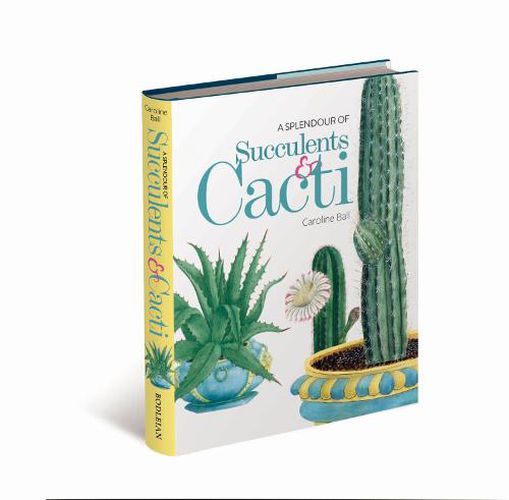Caroline Ball, A Splendour of Succulents & Cacti: Illustrations from an Eighteenth-Century Botanical Treasury (Oxford, 2023) reviewed by Clive Probyn, OAM
In Henry Handel Richardson’s now classic Australian autobiographical novel, The Getting of Wisdom (1910), the novelist looks back at her childhood spent at the post office in Victorian Maldon (‘Warrenega’ in the novel) and describes her mother’s garden, populated by ‘the tall fir-tree, with the rung-like branches . . . the wilderness of bamboo and cane. . . the ancient broad-leaved cactus. . . the high aloe that had such a mysterious charm . . . because you never knew when the hundred years might expire, and the aloe burst into flower.’
Richardson (as Laura Rambotham) never witnessed the so-called Century Plant in flower. Now recognised as Agave americana, it takes decades to reach this stage, flowers once only between ten and seventy years, and then dies, but not without reaching a possible height of up to ten metres. An engraving of its botanical components appears on extra-large pages in the gigantic four- or eight-volume Phytanthoza Iconographia (1737-1745), which depicts over 3,500 different plants on 1,025 engraved copper plates – the work of Georg Dionysius Ehret, Bartholomew Seuter, Johann Ridinger and Johann Haid – the whole compiled by a barber’s son, Johann Wilhelm Weinmann and narrated in German and Latin. In translation, Weinmann’s encyclopaedic plant glossary is Iconography of Plants and Flowers to the Life.
This is Caroline Ball’s second successful trawl through Weinmann’s mighty florilegium. The previous volume, A Cornucopia of Fruit & Vegetables, was reviewed in here in 2021. Both volumes share an identical format in full colour. There is an entertaining introductory essay on the definition and history of succulents and cacti (the latter being ‘just a family of succulents’), and on their ‘collectibility’. Ball’s word for the latter is Succulentomania, This mania goes back to Christopher Columbus and forward to the Chelsea Flower Show, where a succulent was Plant of the Year in 2022. There are plant horrors, none more so than the prickly pear, which had taken over 60 million acres of Queensland and New South Wales by the 1920s. The Australian boab (A. gregorii ) is also a succulent, as are euphorbia and senecio, pelargoniums, samphire, glassworts, and pineapple (a bromeliad to a botanist). The name depends on who is looking.
The human narratives in this botanical catalogue assert themselves throughout: the British Redcoats acquired their scarlet colours (as did painters, dyers and ink makers) from the cochineal parasite on prickly pears. Other cacti produced dye; peyotl was the source of mesacaline, the psychedelic drug that Aldous Huxley favoured in 1954 (The Doors of Perception).
Australia offers the Succulentomaniac plants ‘in captivity’ in the botanical gardens of Sydney and Melbourne, Perth and Kimberley, the native habitat of Australia’s own caudiciform, the boab. Cactus country, with its extensive collection, is a popular destination in Victoria’ (p. 129). A final chapter is devoted to places the succulentomaniac might visit, and thereby illustrates the global fascination and range of succulents and cacti: Arizona, California, Chicago, Milwaukee,Toronto, Argentina and Mexico, the last being the native home of an estimted 60 per cent of cactus species. There is also the Arid House in Oxford, and of course the collections at Kew, Wisley, several in France, Monaco, Puglia, Lanzarote, Marrakesh and Spain.
This second volume is (again) handsomely produced and (again) makes its subject both attractive and intelligible. It also bring us (again) to recognise that extraordinary moment in eighteenth-century European history when vast encyclopaedias were being compiled in the arts and sciences as a way of understanding human beings in the universe.


